Bewertung der Schwankungsbreite eines Messsystems, die auf das Messgerät selbst (Wiederholbarkeit) und die Bediener, die das Gerät verwenden, zurückzuführen ist (Reproduzierbarkeit).
- Methodologien: Maschinenbau, Qualität
Gage R&R (Wiederholbarkeit und Reproduzierbarkeit)

Gage R&R (Wiederholbarkeit und Reproduzierbarkeit)
- Kontinuierliche Verbesserung, Entwurf für Six Sigma (DfSS), Prozess-Fähigkeit, Prozessverbesserung, Qualitätssicherung, Qualitätskontrolle, Statistische Analyse
Zielsetzung:
Wie es verwendet wird:
- Mehrere Bediener messen die gleichen Teile mehrmals mit dem gleichen Messgerät. Anschließend wird eine statistische Analyse durchgeführt, um den Prozentsatz der gesamten Prozessabweichung zu bestimmen, der auf das Messsystem zurückzuführen ist.
Vorteile
- Helps ensure that measurement data is reliable and trustworthy; identifies sources of measurement error; essential for effective Prozesskontrolle and improvement.
Nachteile
- Die ordnungsgemäße Durchführung kann zeitaufwändig sein; erfordert eine sorgfältige Planung und Durchführung; die Interpretation der Ergebnisse erfordert statistisches Verständnis.
Kategorien:
- Lean Sigma, Herstellung, Qualität
Am besten geeignet für:
- Bewertung der Präzision und Zuverlässigkeit eines Messsystems.
Gage R&R studies are widely implemented across various industries such as manufacturing, automotive, aerospace, and healthcare, where consistent and accurate measurements are paramount for quality control and assurance. This methodology is particularly applicable during the early stages of product development, pilot production runs, and ongoing quality monitoring. Participants typically include quality engineers, process engineers, and operators who utilize measurement systems to assess critical dimensions and performance metrics of components. By conducting experiments where multiple operators measure the same parts using a designated gage under similar conditions, organizations can determine the extent of variability that can be attributed to the measurement system itself, as well as to operator variability. In automotive manufacturing, for instance, Gage R&R assessments help to ensure that measurements of component specifications align with safety and performance standards, thereby avoiding costly defects and recalls. Data obtained from statistical analysis enables teams to pinpoint specific sources of variability, whether they stem from equipment calibration issues or operator technique differences. This knowledge informs decisions regarding training needs for personnel, adjustments in measurement procedures, or enhancements in measurement equipment, thereby leading to more reliable processes. Regular application of Gage R&R studies can reinforce a company’s commitment to maintaining high-quality manufacturing standards and facilitate continual improvement initiatives within quality management systems such as ISO 9001 or Six Sigma methodologies.
Die wichtigsten Schritte dieser Methodik
- Select measurement parts and ensure they represent the variation within the population.
- Train operators on the measurement procedure to maintain consistency.
- Have multiple operators measure the same parts multiple times using the same gage.
- Randomize the order of measurements to minimize bias.
- Calculate the variability components from the measurement data.
- Analyze the data using statistical methods, such as ANOVA or equivalent techniques.
- Determine the percentage of total process variation attributed to the measurement system.
- Evaluate and document whether the measurement system is adequate for the intended use.
- Identify and analyze sources of measurement error to improve the system.
Profi-Tipps
- Utilize control charts to monitor and visualize variation over time and operator performance during the Gage R&R study.
- Incorporate training sessions for operators before conducting Gage R&R studies to ensure consistency in measurement techniques and interpretations.
- Perform a multidimensional analysis that includes factor interactions in your statistical evaluation to identify nuanced sources of measurement variation.
Verschiedene Methoden lesen und vergleichen, Wir empfehlen die
> Umfassendes Methoden-Repository <
zusammen mit den über 400 anderen Methoden.
Ihre Kommentare zu dieser Methodik oder zusätzliche Informationen sind willkommen auf der Kommentarbereich unten ↓ , sowie alle ingenieursbezogenen Ideen oder Links.
Historischer Kontext
1950
1950
1959-11
1960
1960
1960
1961
1950
1950
1950
1960
1960
1960
1960
1963
(wenn das Datum nicht bekannt oder nicht relevant ist, z. B. "Strömungsmechanik", wird eine gerundete Schätzung des bemerkenswerten Erscheinens angegeben)



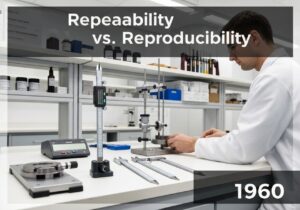
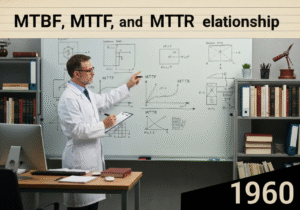


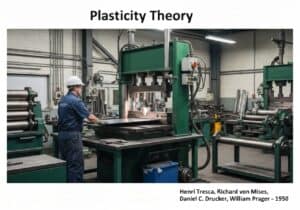
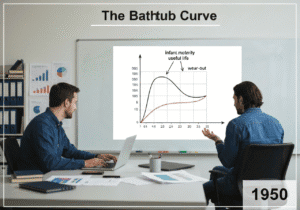

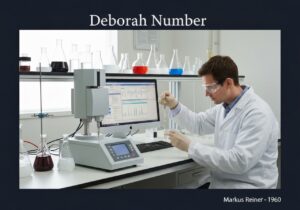
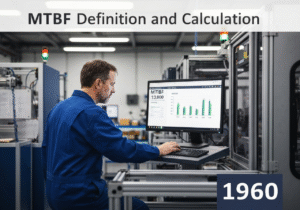


Verwandte Artikel
METS-Kalorien-Rechner
Meta-Analyse
Nachrichten-Mapping
Mentalmodell-Diagramme
Maximal zulässige Druck- und Zugkräfte
Materialbedarfsplanung (MRP)